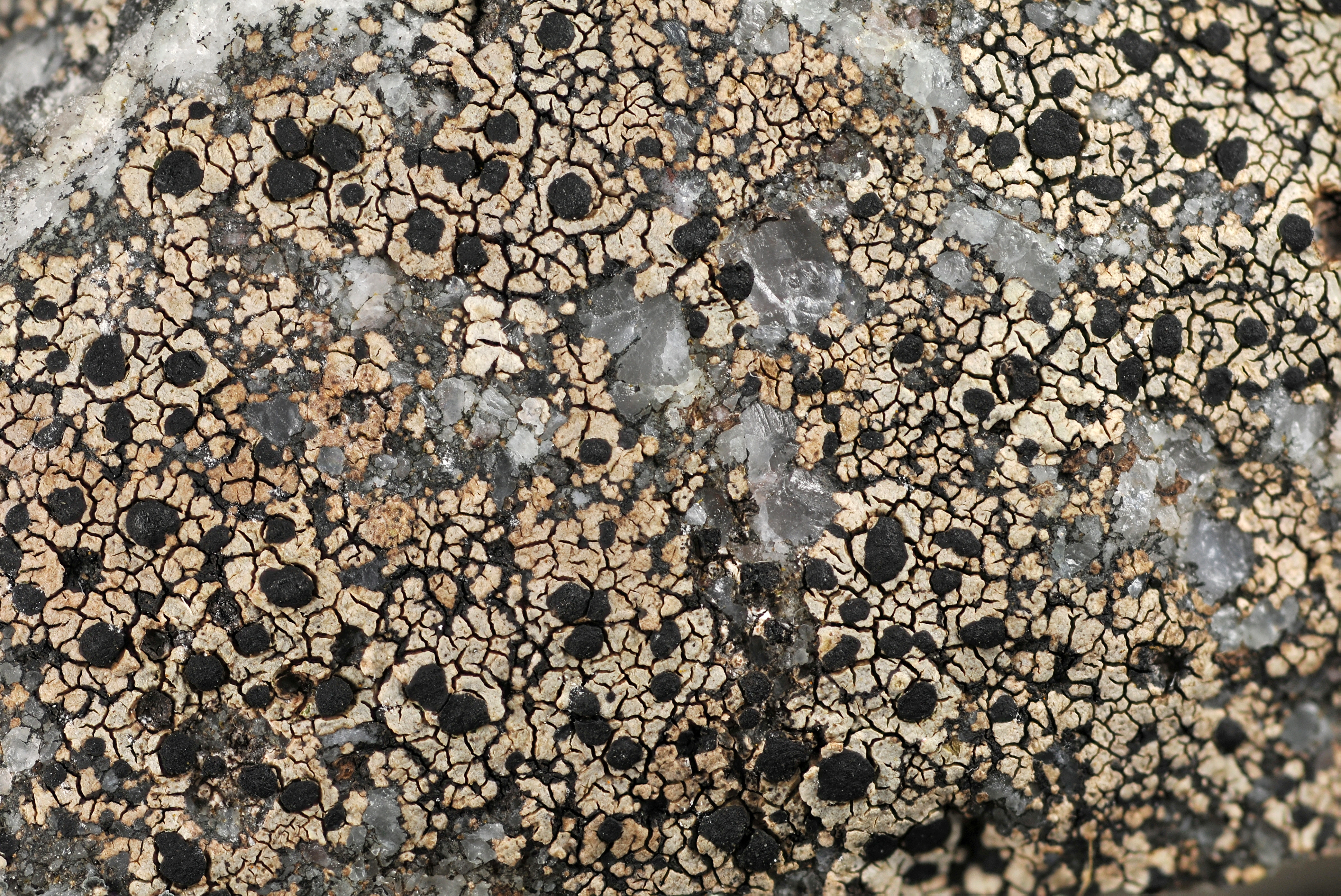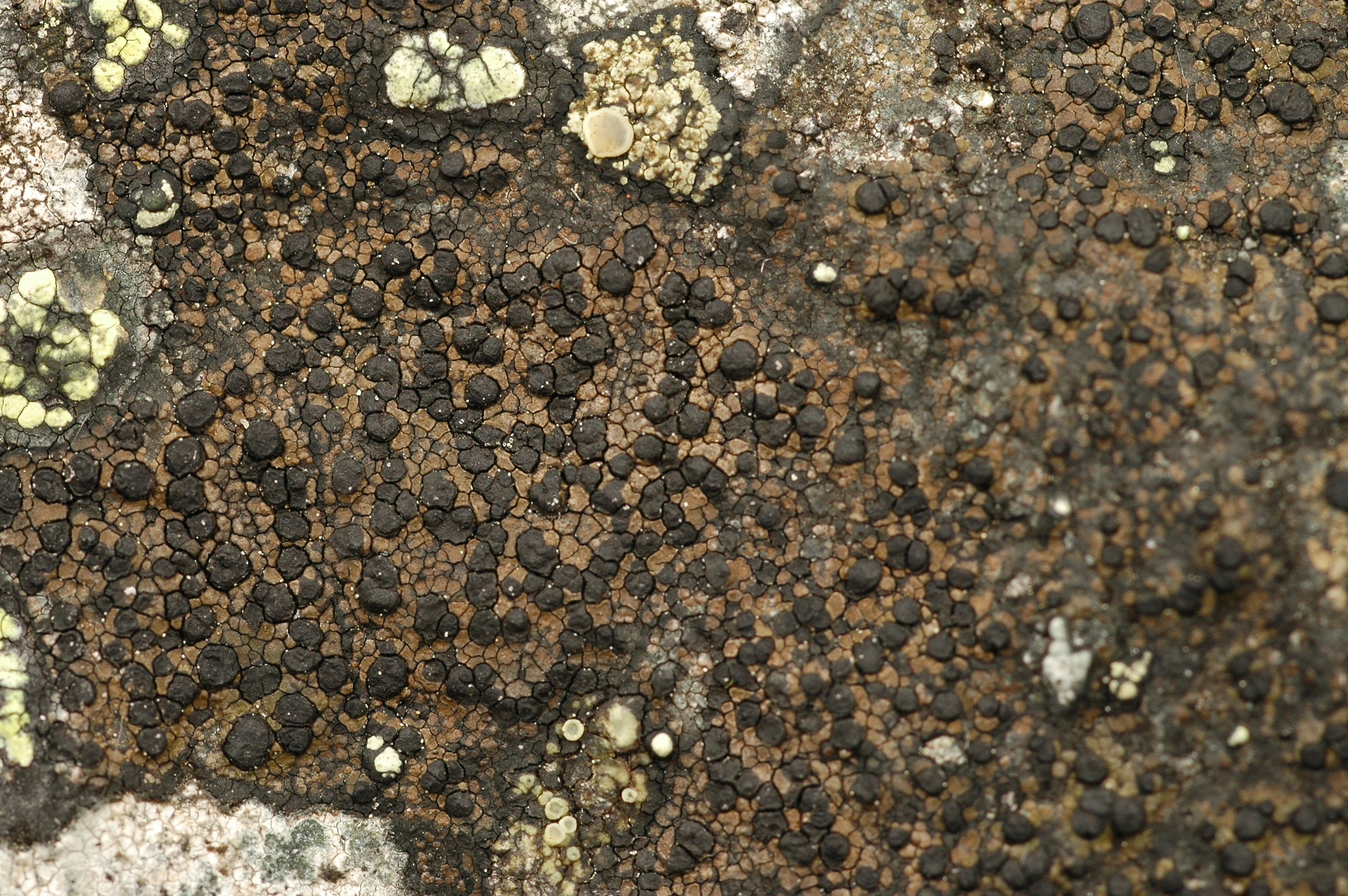Rhizocarpon richardii
- Innhold
- Morphology
- Chemistry
- Habitat
- Comment
- Look-alikes
Morphology
Thallus areolate, up to 10 cm diam.; hypothallus well developed, black; areolae up to 0.5 mm diam., medium brown, usually with a faintly greyish tinge, dull, contiguous, angular, more or less plane; medulla KI+ dark violet. – Apothecia up to 1 mm diam., black, epruinose, more or less orbicular, remaining plane or becoming weakly convex, with an indistinct but usually persistent margin; excipulum brownish black in the rim, pale brown to colourless in inner part, containing crystals dissolving in K, K–; hypothecium dark reddish brown, K–; hymenium colourless; epihymenium dark olivaceous green to greyish black, containing crystals dissolving in K, K– (turning more brightly green); ascospores 8 per ascus, mainly 1-septate, persistently colourless or becoming faintly brown with age, 22–27 × 11–14 µm. – Conidiomata not seen.
Chemistry
Stictic and/or gyrophoric acid; spot tests: medulla PD– or PD+ faintly orange, K– or K+ yellow, C– or C+ red.
Habitat
Common on maritime, mainly siliceous rock along the entire coast.
Comment
It was included in R. polycarpum by Feuerer (1987), but differs in the paler thallus, often with grayish tinge, the more indistinctly marginate apothecia, and in the common occurrence of gyrophoric acid.

